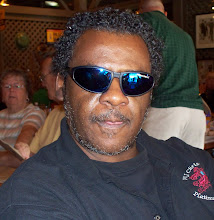Now that you have played and understood how the pawns and knights move, you are ready to add another piece. The next piece you should add to the board is the Bishop. The bishops are placed next to the knights on the third square from the edge of the board on both sides. One bishop should be on a dark square and one a light square. This is most important because the color of the square the bishop stands on is the color the bishop must stay on. The movement of the bishop is not possible at this point because the pawns are lined up in front of them, thus restricting their movement.
Now you start the game the same way as before. counting to the fifth pawn from the left side of the board and moving it two squares forward. Black does not count pawns but moves his pawns two spaces right in front of the white pawn. Again,' this is what we call the pawns meeting'. The pawns cannot move forward as they restrict each other. However the pawn has opened the door for the bishop to move! The bishop on the light suare for white is now free to move as many spaces as you choose. But choose wisely. The bishop moves diagonally and must stay on its color. This means it can never cross a dark square and can only be moves along light squares. From its starting position, it can move five squares forward on the light squares. This will put it in a position for the pawn that is touching it to take. Or if you have really been paying attention, the black knight can also take the white bishop with its move 0-1-2-3- landing on top of the white bishop. This wouldn't be good for white because the bishop, like the knight, is worth 3 points and to just give away your pieces is not going to give you many wins.
Black can move his dark squared bishop in this position, and since five squares would result in black losing its bishop, I suggest you move it 3 squares, attacking the pawn it at which is it now aimed. Remember, the bishop moves diagonally, so you must look at where it can move to when it has changed position. The bishop cannot jump over pieces like a knight. If it runs into another piece of its own color, it must stop. If the piece it runs into is of the opposite color, it can take that piece by removing the piece from the square it is in and replacing the piece with the bishop.
A pawn can take a bishop just like it can take a knight. If the pawn is touching any piece, it can take it. The rule of this game is the same as before -- you must get one of your pawns to the other side of the board to win, not a bishop or a knight, but a pawn.
Monday, September 21, 2009
Subscribe to:
Post Comments (Atom)



No comments:
Post a Comment
Please feel free to share your comments or to ask any questions regarding the etraodinary game of chess!!!